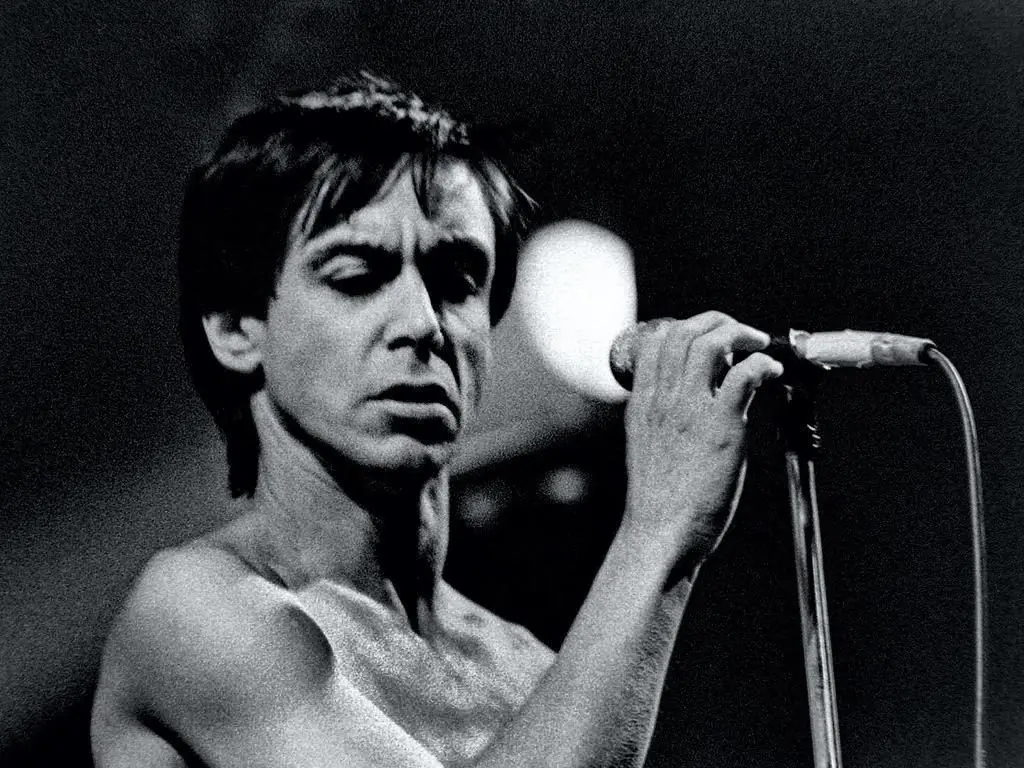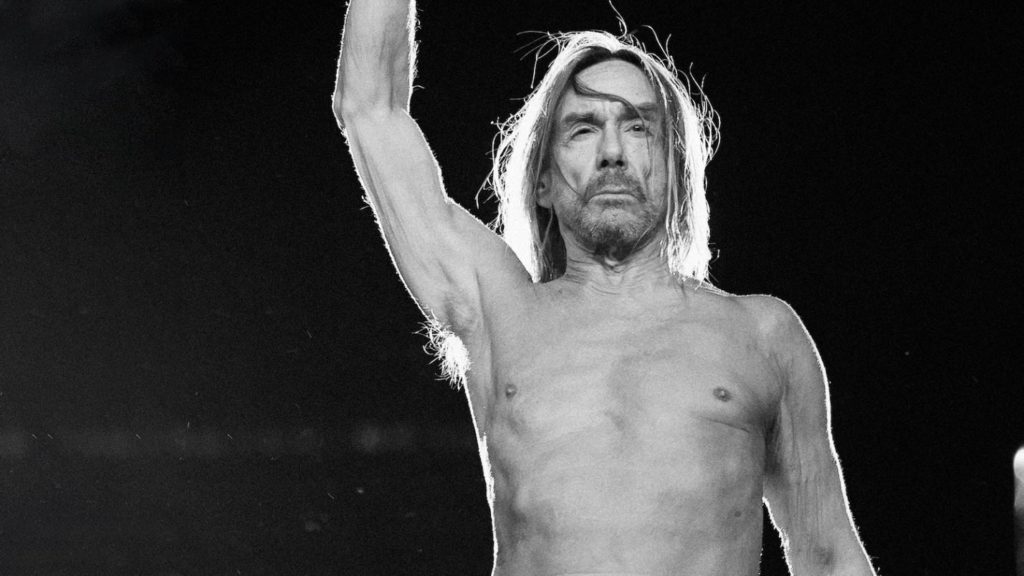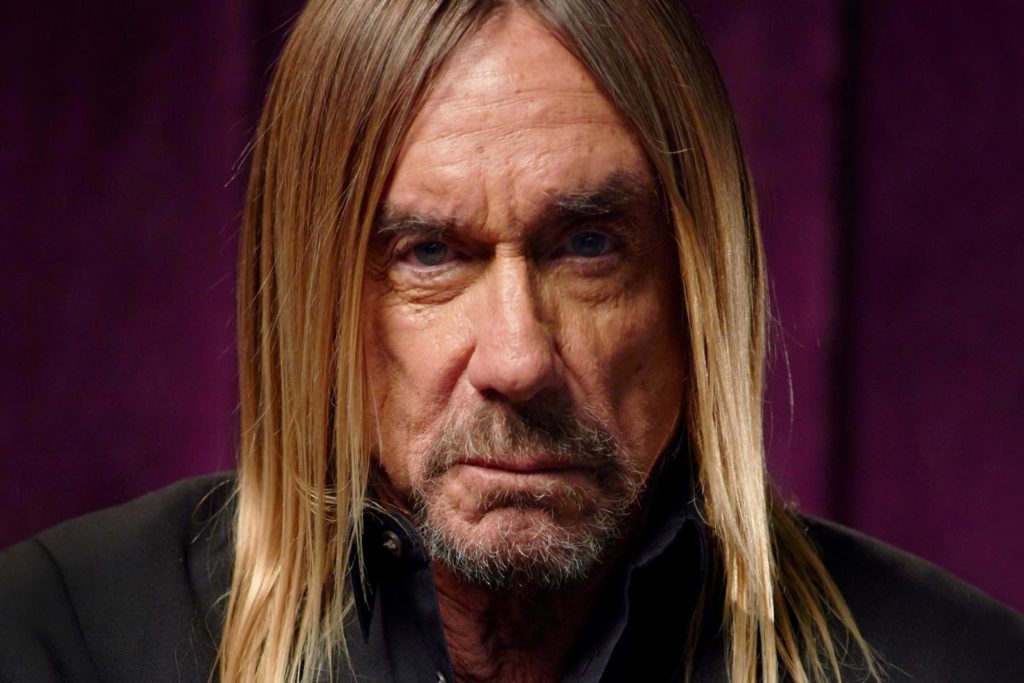It's hard to imagine a more charismatic person than Iggy Pop. Even after passing the mark of 70 years, he continues to radiate unprecedented energy, passing it on to his listeners through music and live performances. It seems that the creativity of Iggy Pop will never run out.
And despite the creative pauses that even such a titan of rock music could not avoid, he continues to be at the top of his fame, having won the status of a “living legend” back in 2009. We offer you to learn about the creative path of this wonderful musician, who released dozens of cult hits that have become firmly established in the mass culture of the whole world.

Biography Iggy Pop
Iggy Pop was born April 21, 1947 in Michigan. At that time, the future musician was known under the name James Newell Osterberg Jr. James's childhood could hardly be called prosperous, as he lived in a family that barely made ends meet.
The hero of our today's article spent all his youth in a trailer park, where representatives of the lower strata of the population gathered. He fell asleep and woke up to the sounds of conveyor factories that did not allow him to relax for a single second. More than anything, James dreamed of breaking out of this gloomy trailer park and gaining independence from his parents.
The beginning of Iggy Pop's career
James became interested in music as a teenager. He was interested in such genres as, for example, the blues, the study of which led the young man to his first musical group.
Initially, the guy tried his hand as a drummer, taking a place in The Iguanas. By the way, it was this young team that inspired the emergence of the speaking pseudonym “Iggy Pop”, which James would take on later.
Passion for music leads James to a number of other groups in which he continues to comprehend the basics of the blues. Realizing that music is the meaning of his whole life, the guy leaves his native land, having moved to Chicago. Dropping out of his studies at a local university, he concentrated entirely on percussion instruments.
But very soon the musician will find his calling in singing. It is in Chicago that he gathers his first group, the Psychedelic Stooges, within which he begins to call himself Iggy. Thus began the ascent of a rock musician to the Olympus of fame.

The Stooges
But real success came to the young man only in the late 1960s, when Iggy's creative style was finally formed. Important is the influence exerted on Iggy by The Doors. Their live performances made a huge impression on the musician. Based on the stage performance of their vocalist Jim Morrison, Iggy creates his own image, which will change the public's perception of how a musician should behave.
While all the other musicians played their track lists stiffly, without leaving their usual places, Iggy tried to be as energetic as possible. He rushed around the stage like a windup, charging the crowd. Later, he would become the inventor of such a popular phenomenon as “stage diving”, which means jumping into the crowd from the stage.
Despite the risks, Iggy continues to do things like this to this day. Often, Iggy ends performances in bloody abrasions and scratches, which have become the hallmark of his stage image.
In 1968, the Psychedelic Stooges shortened their name to the more catchy The Stooges, releasing two albums in a row. Despite the fact that now these records are considered classics of rock, at that time the releases did not have much success with listeners.
Moreover, Iggy Pop's heroin addiction grew, which led to the dissolution of the group in the early 70s.
Iggy's solo career
In the future, fate brought Iggy to another cult musician, David Bowie, with whom he worked on creative work for the first half of the decade. But drug addiction leads Iggy to the fact that he goes to compulsory treatment in a clinic.
He struggled with the problem for years, being surrounded by the likes of Bowie, Dennis Hopper, and Alice Cooper, known for similar problems with heavy substances. So their support had rather a detrimental effect, contributing little to the cure.
Only in the second half of the 70s Iggy Pop found the strength to start a solo career. Signed to RCA Records, he began writing two albums, The Idiot and Lust for Life, destined to become a milestone in music history.
In the creation and release of Pop again helped his friend David Bowie, with whom he continued to work closely. The records are successful and have an impact on several genres that arose later.

Iggy is credited with being the father of genres such as punk rock, post-punk, alternative rock and grunge.
In the future, with varying success, Iggy continued to release albums, delighting the public with the consistently high quality of the material. But to reach those creative heights that were in the second half of the 70s, he was beyond his power.
Iggy Pop's film career
In addition to music, Iggy Pop is known as a film actor who became one of the favorites of the cult director Jim Jarmusch. Iggy starred in such films as "Dead Man", "Coffee and Cigarettes" and "The Dead Don't Die". Among other things, Jarmusch made a documentary film entirely dedicated to the work of Pop.
Among other works of a film musician, it is also worth noting the films “The Color of Money”, “The Crow 2” and “Cry-Baby”. Also, Iggy Pop is connected with the cinema by the music, for the authorship of which he stands. His hits can be heard in dozens of classic films including, for example, the black comedies Trainspotting and Cards, Money, Two Smoking Barrels.

Conclusion
In the life of Iggy Pop, there was a place not only for ups and downs, but also for downs. And over the years that he has been working in the field of show business, he managed to prove himself as a multifaceted personality. Without him, alternative rock music would never be what we know it to be.
He achieved success not only in music, but also in many other areas of art. It remains only to wish Iggy good health, so that he can delight us with new releases for many more years to come.



